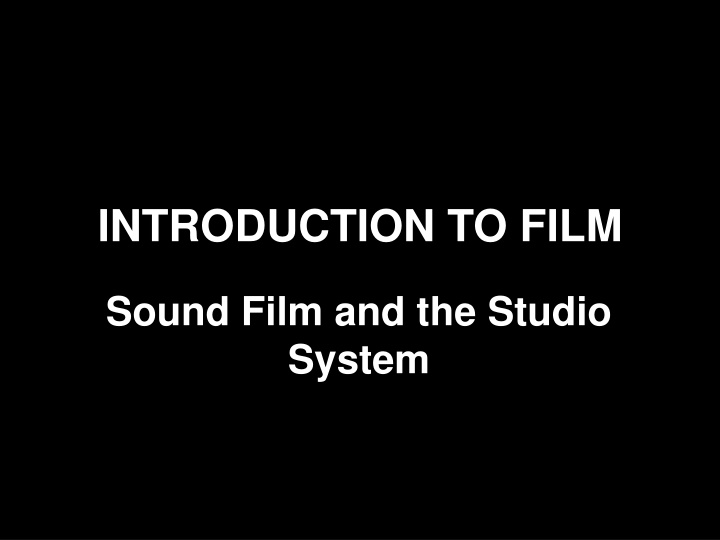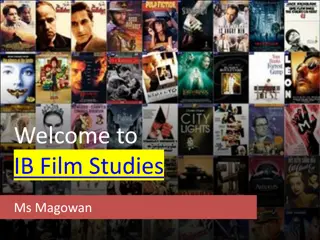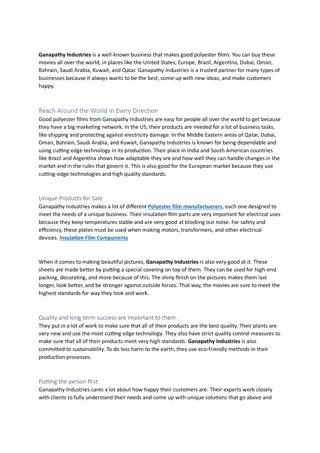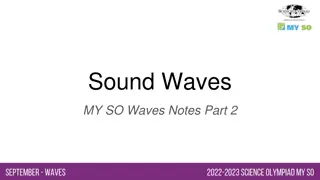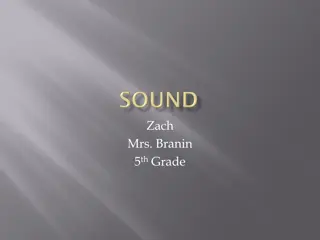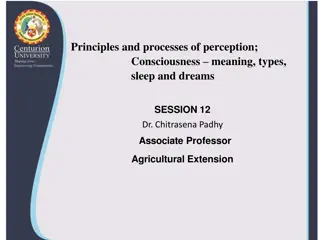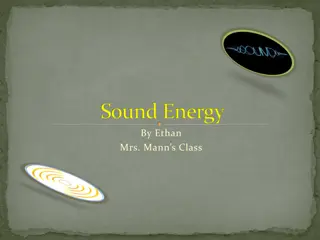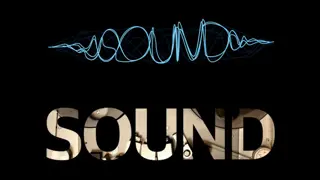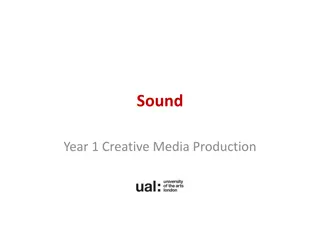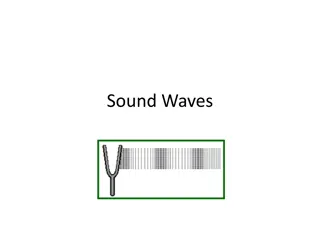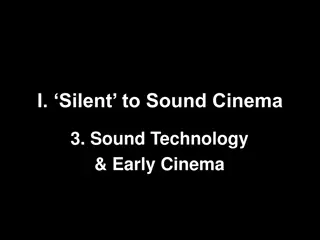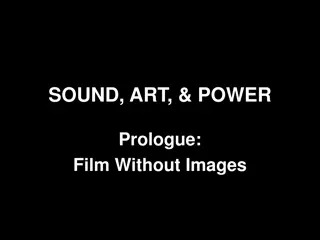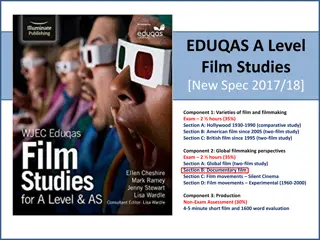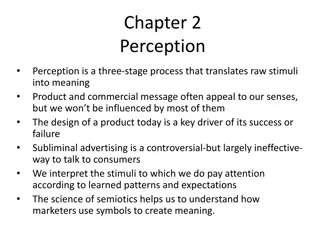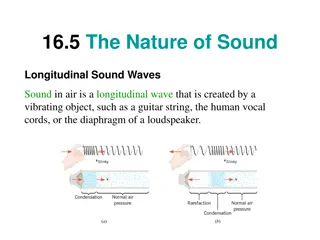Sound in Film: Shaping Perception
Sound in film plays a crucial role in shaping how we perceive and interpret images. This influence is achieved through elements such as loudness, pitch, timbre, silence, rhythm, and fidelity. Understanding these aspects is essential in appreciating the intricate relationship between sound and visuals in cinema.
Download Presentation

Please find below an Image/Link to download the presentation.
The content on the website is provided AS IS for your information and personal use only. It may not be sold, licensed, or shared on other websites without obtaining consent from the author.If you encounter any issues during the download, it is possible that the publisher has removed the file from their server.
You are allowed to download the files provided on this website for personal or commercial use, subject to the condition that they are used lawfully. All files are the property of their respective owners.
The content on the website is provided AS IS for your information and personal use only. It may not be sold, licensed, or shared on other websites without obtaining consent from the author.
E N D
Presentation Transcript
INTRODUCTION TO FILM Sound Film and the Studio System
Avant-Garde Cinema Group 1: Meshes of the Afternoon (1935) Dir. Maya Deren
Sound can actively shape how we perceive and interpret the image:
Sound can actively shape how we perceive and interpret the image: Loudness (volume, distance, space, emotion)
Sound can actively shape how we perceive and interpret the image: Loudness (volume, distance, space, emotion) Pitch (highness or lowness of the sound, voice)
Sound can actively shape how we perceive and interpret the image: Loudness (volume, distance, space, emotion) Pitch (highness or lowness of the sound, voice) Timbre (color and tone)
Sound can actively shape how we perceive and interpret the image: Loudness (volume, distance, space, emotion) Pitch (highness or lowness of the sound, voice) Timbre (color and tone) Silence (true silence is very rare in film)
Sound can actively shape how we perceive and interpret the image: Loudness (volume, distance, space, emotion) Pitch (highness or lowness of the sound, voice) Timbre (color and tone) Silence (true silence is very rare in film) Rhythm (editing, speech, music)
Sound can actively shape how we perceive and interpret the image: Loudness (volume, distance, space, emotion) Pitch (highness or lowness of the sound, voice) Timbre (color and tone) Silence (true silence is very rare in film) Rhythm (editing, speech, music) Fidelity (realism, expressive quality, fidelity has nothing to do with what originally made the sound in production. Film Art, p. 365)
Sound can actively shape how we perceive and interpret the image: Loudness (volume, distance, space, emotion) Pitch (highness or lowness of the sound, voice) Timbre (color and tone) Silence (true silence is very rare in film) Rhythm (editing, speech, music) Fidelity (realism, expressive quality, fidelity has nothing to do with what originally made the sound in production. Film Art, p. 365)
Sound space Time and duration
Sound space Time and duration (Film Art, p. 395) Good questions to ask when analyzing sound in film.
Rick Altman Professor in Cinema and Comparative literature at University of Iowa Also written books on the musical film genre, and edited a book on sound theory and practice that we will read from later this semester.
Sound in Early Cinema What sounds were heard in relationship to early films?
Sound in Early Cinema What sounds were heard in relationship to early films? Music (live or recorded, orchestral to popular)
Sound in Early Cinema What sounds were heard in relationship to early films? Music (live or recorded, orchestral to popular) Human voice (lecturers, actors, audience)
Sound in Early Cinema What sounds were heard in relationship to early films? Music (live or recorded, orchestral to popular) Human voice (lecturers, actors, audience) Sound effects (performative)
Sound in Early Cinema What sounds were heard in relationship to early films? Music (live or recorded, orchestral to popular) Human voice (lecturers, actors, audience) Sound effects (performative) Silence
Sound in Early Cinema What sounds were heard in relationship to early films? Music (live or recorded, orchestral to popular) Human voice (lecturers, actors, audience) Sound effects (performative) Silence Machines (vitascope vs. cinematographe)
Sound in Early Cinema What sounds were heard in relationship to early films? Music (live or recorded, orchestral to popular) Human voice (lecturers, actors, audience) Sound effects (performative) Silence Machines (vitascope vs. cinematographe) Other forms of entertainment
The Kinetophone combining Kinetoscope with phonogram
The Kinetophone combining Kinetoscope with phonogram Semi-synchronization
The Kinetophone combining Kinetoscope with phonogram Semi-synchronization Cue-sound aesthetic: instead of people making sounds, dance and band films portray people keeping time to sounds. (Altman, p. 81)
The Kinetophone combining Kinetoscope with phonogram Semi-synchronization Cue-sound aesthetic: instead of people making sounds, dance and band films portray people keeping time to sounds. (Altman, p. 81)
Silent Film Music Film programs before 1912 - several short films, illustrated songs, and vaudeville acts Early teens ( golden era of silent film music) explosion of theater construction; picture palaces; blockbuster films of 1915-16 season 1914-20: expected number of musicians went from 16 to over 70 concert-level musicians
By 1922: 500 theater orchestras of 30+ musicians out of about 15,000 theaters in the U.S. 30-50% of theaters employ an orchestra, most commonly 5- 10 musicians
Film Music for The Birth of A Nation The Clune orchestra featured 40 instrumentalists, several vocalists, and a chorus of 12. The Liberty orchestra featured 50 instrumentalist. Score by Carli Elinor, with compositions by Mozart, Rossini, Bizet, and Beethoven. New score by Joseph Carl Breil, incorporating Romantic compositions (e.g. Wagner), folk favorites (e.g. Auld Lang Syne ) marches and patriotic numbers (e.g. Dixie ) as well as popular tunes (e.g. Zip Coon )
Breils original composition love theme for Elsie Stoneman and Ben Cameron marketed as The Perfect Song (sheet music) The Birth of A Nation proved that motion pictures could serve as prestige vehicles. In order to fulfill this promise, however, a film had to be accompanied by an orchestra of unprecedented size. (Altman, p. 294)
Multi-Perspectival Analysis of The Birth of A Nation 1. Its visual language and narrative structure 2. Race, gender, stereotypes, ideology 3. Its musical score as representative of the golden era of silent film music
Multi-Perspectival Analysis of The Birth of A Nation 3. Its musical score as representative of the golden era of silent film music
3. Silent Film Music What do you hear when you watched The Birth of A Nation?
3. Silent Film Music What do you hear when you watched The Birth of A Nation? How does the film s music make you feel?
3. Silent Film Music What do you hear when you watched The Birth of A Nation? How does the film s music make you feel? Does the music in the film interact with its images? If yes, how so?
3. Silent Film Music What do you hear when you watched The Birth of A Nation? How does the film s music make you feel? Does the music in the film interact with its images? If yes, how so? What are the role(s) of music in film form, narrative, and ideology?
Douglas Gomery Douglas Gomery is Resident Scholar at the Broadcasting Archives at the University of Maryland and Professor Emeritus at the Philip Merrill College of Journalism at the University of Maryland in College Park. His publications include The Coming of Sound: A History (1975), The Hollywood Studio System (1986), and A History of Broadcasting in the United States (2008).
Gomery has written for the Village Voice, Modern Maturity, The Wilson Quarterly, The Baltimore Sun and other newspapers. He is a former senior researcher for the Woodrow Wilson International Center for Scholars Media Studies project.
The Coming of Sound and the Hollywood Studio System 1925-1934: The Jazz Singer (1927), Society of Sound Engineers formed in 1934 A period of experimentation driven by the smaller companies of Warner Brothers and Fox, adapting telephone (AT&T) and radio (RCA) research for use in film. Warner Bros Pictures Inc. formed Vitaphone in 1926
The Coming of Sound and the Hollywood Studio System 1925-1934: The Jazz Singer (1927), Society of Sound Engineers formed in 1934 A period of experimentation driven by the smaller companies of Warner Brothers and Fox, adapting telephone (AT&T) and radio (RCA) research for use in film. Warner Bros Pictures Inc. formed Vitaphone in 1926
Gomery identifies 3 distinct phases: invention, innovation, diffusion Focused on singing and musical films, and newsreels (Fox Movietone News)
Gomery identifies 3 distinct phases: invention, innovation, diffusion Focused on singing and musical films, and newsreels (Fox Movietone News)
Critical Voices: The period of the transition to sound film offers a splendid example of historical overdetermination. (Williams, p. 126) Sound is a two-edged invention, and it is most probable that its use will proceed along the line of least resistance, i.e. along the line of satisfying simple curiosity. (Soviet Constructivists, p. 83)
Critical Voices: The period of the transition to sound film offers a splendid example of historical overdetermination. (Williams, p. 126) Sound is a two-edged invention, and it is most probable that its use will proceed along the line of least resistance, i.e. along the line of satisfying simple curiosity. (Soviet Constructivists, p. 83) Did synch-sound technology lead to the dominance of classical Hollywood film style?
Key Terms: The Coming of Sound a term commonly used to refer to the period in which the U.S. film industry (i.e. Hollywood) adopted the cinematic form and production model of films with synchronous sound, especially dialogue. This period can be roughly defined as late 1920s to mid 30s (1925-1934) for the U.S. The rate and period of adoption varies between countries and film industries
Synchronous sound sound that is matched with the image to create a sense of realism. For example, when the dialogue corresponds to the lip movements of an actor. The standards of image- sound synchronization can vary depending on the conditions of production. Asynchronous sound - sound that is not matched temporally with the movements occurring in the images. For example, when dialogue does not match the lip movements of the actor. Diegetic sound any sound (voice, music, location, sound effect) presented as a part of the diegesis (the world that the film constructs).
Non-diegetic sound sound originating from a source outside the film s world, such as music or voice commentary not from a character in the film. Internal diegetic sound sound originating from inside the mind of a character, sometimes this includes amplified bodily sounds such as breathing, moans and groans. External diegetic sound diegetic sound occurring outside the mind or body of a character. Sound bridge sound that comes in earlier or stay later than the image, used to create smooth transitions between visual edits.
Off-screen sound diegetic sound from a source that is not visible onscreen. Off-screen space areas not visible onscreen but still part of the space of the scene. For example, off each side, above, and below the frame, behind the set, behind the camera.
